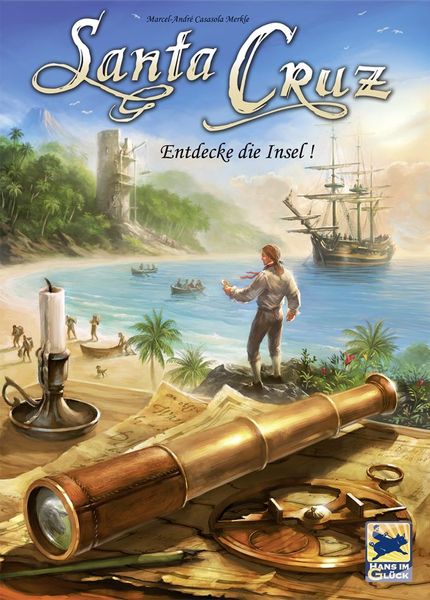Santa Cruz (2012) Board Game
Santa Cruz is a board game designed by Marcel-André Casasola Merkle and published by Filosofia Éditions in in 2012. The game is set in the 16th century, where players take on the role of explorers trying to establish settlements on the island of Santa Cruz.
Game Components of Santa Cruz
How To Setup Santa Cruz
To set up Santa Cruz, start by shuffling and randomly placing the tiles face down on the board, following specific patterns for land, volcano, and special tiles. Each player receives a set of Building Cards and Scoring Cards, with the number of cards depending on the number of players. Players place their scoring markers on the scoring track, and the youngest player or the player who chose their card set last starts the first round.
Gameplay Mechanics and Game Objective
Player Experience
In Santa Cruz, players engage in a strategic settlement-building process, balancing resource management and point collection. The game offers a simple yet engaging experience, especially for families and casual gamers. The random tile placement and the volcano eruption mechanic introduce elements of unpredictability, keeping the game exciting and challenging.
Pros
Cons
Personal Thoughts on Santa Cruz
Santa Cruz is an excellent choice for families, new gamers, and anyone looking for a light to medium-weight strategy game. While it may not offer the depth that hardcore gamers seek, its ease of learning and playful mechanics make it a great introduction to the world of board games. It’s particularly suited for those who enjoy resource management and building games with a touch of unpredictability.
We are supported by our audience. When you purchase through links on our site, we may earn an affiliate commission, at no extra cost for you. Learn more.

